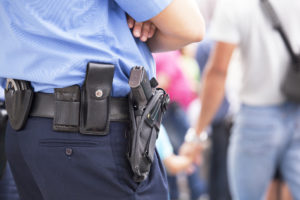Police Codes: How Do They Communicate, And What Do Their Codes Mean?

Police officers have to be able to communicate quickly in order to effectively keep the peace. When a dangerous situation arises, they may not have time to give a lengthy explanation of what is happening, which is why codes exist.
Police use many codes as a form of shorthand to communicate with one another.
But what do they mean? Below, we’ll discuss what many police codes are used for.
The Most Common Police Codes
Frankly, we can’t list all police codes here, as there are simply too many of them, and many of them are extremely niche and miscellaneous. However, we can share some of the most common police codes that are used most often.
Below are some of the most frequently used codes used by the police force. These codes are used to communicate specific situations to other officers while on duty. They are combined with regular speech, simply being used to simplify communication in many situations.
For example, at the end of this list, you will see “Code 6”, which means “out of the vehicle for investigation”. Instead of explaining that they are exiting their vehicle to investigate something, an officer could simply say “Code 6” to get that information across to someone else on the radio.
10-15: Prisoner in Custody
10-17: En Route
10-18: Urgent/Complete Present Assignment ASAP
10-23: Arrived at the scene
10-32: Person With Gun
10-33: Emergency, All Units Stand By
10-54: Possible Fatality
10-79: Bomb Threat
10-80: Pursuit in Progress
10-99: Officer Held Hostage
Code 3: Emergency-Proceed With Lights and Siren On
Code 4: No Further Assistance Required
Code 6: Out of Vehicle for Investigation
As you can see, there are many police codes, and this is not even all of them, only some of the most common. Codes are not used explicitly: in some cases, officers will just say what a situation is in detail. In fact, the US government even recommends that officers use plain speech instead of codes because there is no code standardization between jurisdictions, and they want to avoid possible mix-ups.
Even so, police codes are still used quite frequently by many officers in various jurisdictions around the country. It’s just that the meaning of each code may change depending on where you are. It can vary from state to state or even county to county in some cases. This means police codes tend to be used when communicating with officers from your department, but not with those from other departments.
Summary
Police codes are often number combinations that stand for certain situations. It allows an officer to communicate quickly and efficiently with other members of their department and reduces the risk of confusion or mistranslation over the radio.
Not all codes are for urgent situations, which means some of them are used less frequently than others. They also have different meanings depending on which jurisdiction you’re in. Still, police officers are required to know what most, if not all, of these codes, mean.




